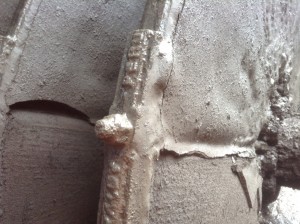What Effect Will Increasing The Pore Size Of The Filter Have On The Filtration Rate
Here is a list of all Factors Affecting Filtration Rates and Block Moistures in plants or laboratory de-watering systems and processes.
Particle Size of Solids
Mostly the large the particle size, the higher the filtration rate in Kg/m2/h and the lower the block wet. Even so, the validity of the last statement depends on other factors, e.thou. distribution specific gravity of solids, absence of slimes and feed concentrates. For instance, a pocket-size average particle size, but with a narrow distribution range and no slurries, will take a loftier rate.
Ratio of slimes to coarser particles
The slimes or extreme fines in a filter feed slurry bear upon filtration rates to a vastly greater extent than their pct. The balance cake wet is similarly seriously affected. A particularly difficult slurry is one that contains relatively coarse particles and a number of very fine or slimy particles with little or no intermediate size.
Filter aids
Filter aids like diatomaceous earth, perlite, powdered coal, fly-ash or paper lurid may be added to the flurry to increment its filtration rate and cake porosity.
Feed solids concentration
In general, the greater the per centum of suspended solids in a given slurry, the college the cake filter charge per unit in Kg/m2/h and the lower the filter rate in m3/m2/h. Where maximum solids chapters is desired it is advisable to consider thickening the slurry by gravity. In some applications involving thickening with sludge recycle, particle size is really increased and both cake and filtrate rates can increase.
Filter Thickening
Filter thickening commonly occurs in a continuous filter rotating in a tank containing slurry wherein the solids in the filter tank increase in concentration and shift to a coarser size distribution. While an equilibrium concentration and size distribution is usually obtained, it may sometimes be necessary to dilute the pulp.
Slurry pH
Since slurry pH and particle dispersion are closely related, changes in pH could be i of the most effective methods to reach flocculation and improved filterability, if the procedure can tolerate it.
Flocculation/Dispersion of fine solids
Flocculation is generally desirable for slurries of fine solids which are in a dispersed state and generally filter poorly. The wide variety of polyelectrolyte flocculants provides room for a substantial improvement in filtration rates. Effective use of flocculants, peculiarly polyelectrolytes, on moderately high concentration filter feeds requires strong agitation to get proficient solids-flocculant contact. A minimum of further agitation and minimum aging are important.
Some slurries may be so sticky every bit to create filtering issues and a dispersant may be a better way to gain fluidity than dilution.
Slurry Age
Sometimes processes involve detention times whether international or not, which provide a conditioning effect, modifying filter performance. Samples shipped for testing involve a risk that excessive aging may accept some upshot on filterability.
Viscosity of liquor and temperature
This is ane of the nigh significant variables both in filtration rate and charge per unit of dewatering to a minimum moisture. Viscosity is closely related to temperature. As temperature is increased, viscosity is decreased resulting in a higher filter capacity and lower cake moisture.
As the same fourth dimension, increased vapour pressure volition assist reduce wet.
Agitation Speed
Some slurries, particularly with a broad particle size range, tend to classify in the test slurry container or the filter tube. Increasing the agitation speed (or stirring) to a point that the coarse and fine particles are always thoroughly mixed may be desirable although too loftier a speed could limit block thickness, prevent coarser particles from forming in the block or crusade delicate flocs to pause downwards.
Type of Filter Medium
Filtering characteristics of fabrics depend mostly on the blazon of yarn and weave. Yarns tin can be momo-filament, multi-filament, spun from staple fibre, or a combination of the latter two. A high twist tin can make a multi-filament perform more similar a mono-filament.
Permeability and porosity are prime number qualities in cloth selection. The Frazier permeability rating, expressed as cfm/sq ft, is a measure out of air menstruum at i-half inch water pressure through a dry cloth, and is comparable to per cent open area.
Porosity and particle memory may non be accurately indicated by permeability; there being no straight mensurate of porosity.
Filter cloth status
Cloth conditioning refers to the reduction of pore size or open area due to entrapment of fine solids in the interstices.
Applied vacuum
The practical vacuum creates the pressure differential which is the driving forcefulness for filtration and dewatering. Loftier vacuums give somewhat higher rates and lower moistures in all cases except for unusually incompressible cakes or where the filter medium becomes more conditioned. With coarse particles and porous caked lower vacuums (e.g. 5"-10" Hg) may exist adequate. With such porous cakes, the vacuum chapters (m3 / m2 ) could be the important factor.
Bike Fourth dimension
Bike time of leaf tests is coordinating to the filter pulsate speed, generally expressed in seconds or minutes per revolution. Generally the faster the drum speed, the college the output. However, under these conditions, the cake is thinner and sometimes wetter, then discharge may deteriorate. At all times, a dischargeable cake must be produced. Any final selection of bicycle or pulsate speed is a compromise of these conditions.
Surface Tension
Lowering of surface tension through college temperature or surfactants can significantly improve cake wet of some materials. Its benefits are not predictable and it has no identifiable event on filtration rate. Where surfactants are sued, vacuum chapters may be greatly reduced.
Cake Pinch
Block pinch is ordinarily achieved as an adjunct to the filtration stride to reduce cake moistures of compressible cakes.
What Effect Will Increasing The Pore Size Of The Filter Have On The Filtration Rate,
Source: https://www.911metallurgist.com/blog/factors-affecting-filtration-rates-and-cake-moistures
Posted by: sumpterpriatter.blogspot.com


0 Response to "What Effect Will Increasing The Pore Size Of The Filter Have On The Filtration Rate"
Post a Comment